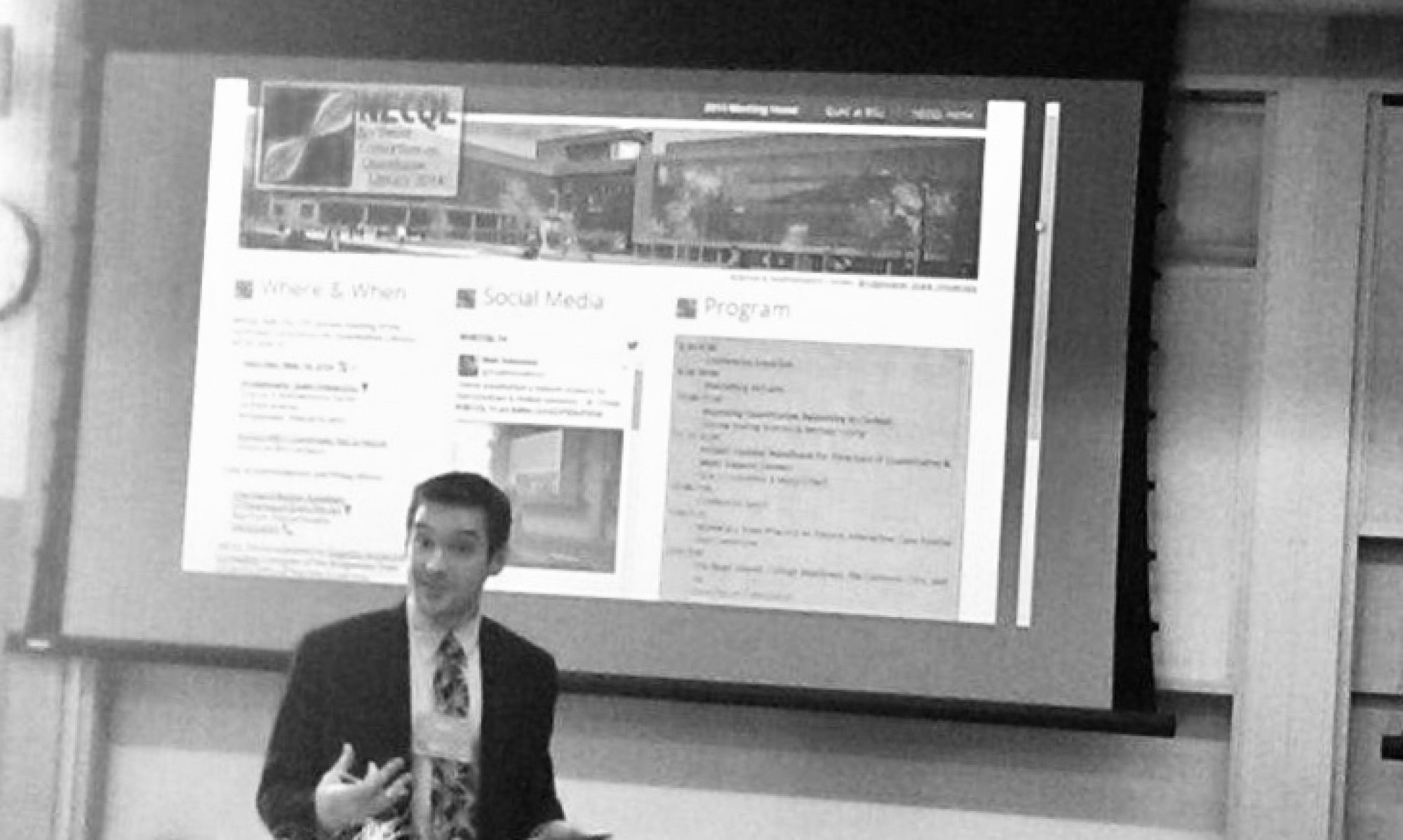One of the reasons I haven’t been more eager to teach online is my own views about what both faculty and students expect online learning to look like. My Twitter feed today had a couple good examples. Tweeted from a big online learning conference, the faculty (or at least faculty-developer) perspective:
Some Faculty say "online doesn't allow interaction" |what those Faculty mean| "I don't want 2 make the effort 2 learn" #OLCAccelerate pic.twitter.com/p96cJeiaMr
— Keith W. O'Neal (@iMinisterYouth) November 17, 2016
I’m participating in the #HumanMOOC course on human presence in online education precisely because I do think this way. (Although I am in fact ready to learn.) But worse, I’m daunted by the perspective that exists among students as well, many of whom opt for online courses precisely for reasons that make human interaction difficult:
Why do online courses require group work? I take them online because I don't want to interact with other people.
— Pam (@Jasyla_) November 15, 2016
Clearly some students expect online learning to be impersonal, even anonymous. They expect little interaction with their professor and less with their classmates. They expect an easier course in some cases. They may use anonymity for nefarious purposes (harassment, academic dishonesty). Some of this is stereotype, but I expect not all.
So when I think about a class-wide video chat such as the one shown in the first tweet above, I think about how challenging that would be to make happen. The technology – both hardware and software – however seamless on my end, I envision it being a potential nightmare on the student end. If a student “can’t get their microphone to work” for several weeks, will they drop the class? Will my campus IT support be able to help, especially if the student is not physically present on campus? What if the student can’t afford the technology necessary for this kind of interaction?
And worse, my previous attempts at synchronous interactions with large groups of my students online have flopped spectacularly due to students’ inability to schedule the time around their other obligations. It’d be a dream to have all 25 of my students in an online course meet at one place and one time virtually for a class discussion, but I know that many of them will have opted to take the course online precisely because they don’t want to abide by a regularly scheduled meeting time. So these are big hurdles to overcome, but I’m open to having my thinking reoriented. There are, I’m sure, a lot of ways to human interaction in online learning beyond the synchronous video chat, and I’m looking forward to learning more about them.

Yes. I think of online interaction as a blend of some synchronous in a mostly asynchronous mix. Asynchronous interaction has many advantages over synchronous: we can wait to participate till we have our thoughts better formed. We can respond to others with a little more care (I’ve reworded this comment a few times already!). We have time to research our ideas. We have a record of our discussions. For teachers, keeping an eye on this can be time consuming but also fascinating and rewarding.
Synchronous meetups are great but I prefer to have them as optional sessions. They may be difficult for students who have work and family commitments. I also like to have an alternative channel for students to communicate, either a chat window in webinar software or Google chat, Whatsapp or whatever your students prefer. The more people you have in your session, the greater the probability that somebody is looking at their mic wondering why it’s decided this is the time to play dead. Recording sessions allows students who couldn’t make it to catch up/see what they missed.
Yes, thanks for your comments! You surfaced something else that’s probably motivating me as well beneath the surface:
I’m drawn to synchronous activities because they have boundaries – like a face-to-face class meeting, I can prepare, participate, and then move on. I can definitely see asynchronous activities invading my personal time more — I’m already a Twitter junkie these days, so I can imagine it being challenging not to instantly respond to every student comment in an async environment!
Putting a boundary around online interaction is challenging but absolutely necessary. Common approaches are to have a kind of contract with students about how much interaction to expect from you and how you will handle it e.g. you can’t respond to individual posts, but you will read them and give a weekly update on how it’s going.
Some teachers say they engage more personally while students are getting used to the course and the environment and then taper it off, letting students know this is what they’re doing. If you use collaborative problem-based or inquiry-based approaches, often once the groups are into the task you can ask them to nominate somebody in each group to contact you if they have any questions or problems and maybe check in on their progress on a weekly basis. We’ve used this approach successfully at University of Sheffield School of Clinical Dentistry.
This advice from the University of Warwick is quite helpful I think:
https://www2.warwick.ac.uk/services/ldc/resource/eguides/etutoring/#managing